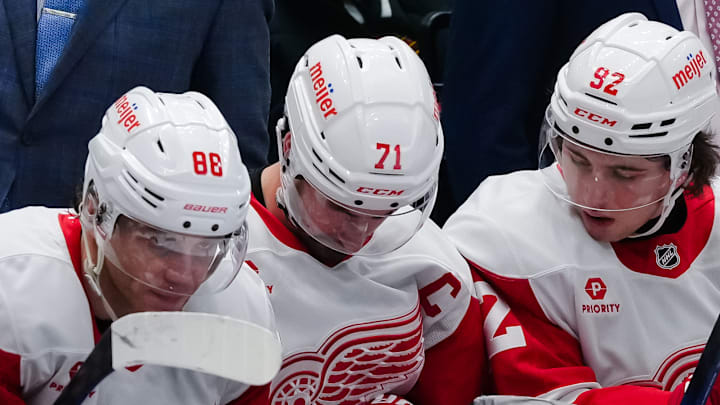Not all studies are created equal.
Some advance knowledge; others merely restate what anyone paying half-attention already knows. A recent story by Rotowire falls squarely in the latter camp, solemnly informing readers that during the 2024–25 season, the Detroit Red Wings ranked among the NHL’s least aggressive teams. One imagines this was meant as revelation. In reality, it is the journalistic equivalent of announcing that water is wet.
After all, the Red Wings finished last season saddled with one of the worst penalty kills in league history—operating at just 70.1 percent, the fourth-lowest figure since the NHL began tracking the statistic in 1977.
The problem recalls another exercise in redundancy: a hypothetical study dissecting a fighter who has been knocked out six consecutive times, concluding that he may, in fact, have poor defense. One struggles to feign surprise.
Being rendered unconscious in half a dozen straight contests has a way of informing people that perhaps the fighter is really bad at defending themselves.
Red Wings seek to rewrite the narrative
Fortunately for Detroit fans, the organization itself has shown more imagination than some of its analysts. General manager Steve Yzerman entered the 2025 offseason with a clear mandate: strengthen the defensive corps, stabilize special teams, and build a penalty kill that does not evoke statistical infamy.
The Red Wings pursued this mission on several fronts.
- Veteran Experience: The addition of Travis Hamonic, signed to a one-year, $1 million contract, gives the blue line a steady if aging presence. At 35, Hamonic is no longer the physical force of his prime, but his leadership and situational awareness remain assets, particularly for a defensive unit still finding its identity.
- Depth on Defense: Detroit also added Jacob Bernard-Docker and Ian Mitchell, both low-cost signings designed to provide flexibility and competition on the back end. Neither is expected to anchor a top pairing, but both represent insurance against injuries and inconsistency.
- Penalty Kill Forwards: Perhaps most intriguing are the signings of James van Riemsdyk and Mason Appleton, each bringing a skill set that could prove pivotal in reversing Detroit’s short-handed woes.
The James van Riemsdyk factor
While it would be a stretch to anoint van Riemsdyk a “penalty-killing specialist,” he has long been recognized for his intelligence, discipline, and positional awareness in defensive situations. Skeptics note that he is now 36 and no longer a central figure in a young roster’s future. Yet that critique ignores his potential as a mentor and his continuing utility on the ice.
In 71 games with Columbus last season, van Riemsdyk posted a respectable 36 points (16 goals, 20 assists). At just $1 million, the contract represents minimal risk for Detroit and the potential for meaningful returns—both statistically and in terms of culture.
The Mason Appleton element
If van Riemsdyk brings brains, Mason Appleton brings energy. Set to turn 30 in January, Appleton plays with speed, aggressiveness, and a disruptive forecheck. That style not only complements the power play but directly addresses the passivity that doomed Detroit’s penalty kill last season. Appleton’s ability to pressure opponents and force turnovers may prove exactly the tonic the Red Wings require.
Looking ahead
For all the chatter about “studies” diagnosing last season’s shortcomings, the real test will come on the ice. With a retooled defense, greater forward depth, and a penalty kill reinforced by savvy acquisitions, the Red Wings are positioned to look far different in 2025–26.
Whether they climb out of statistical infamy remains to be seen. But one thing is certain: we do not need another redundant analysis to tell us what the standings, the scoreboard, and the penalty-kill percentage have already been telling us.
